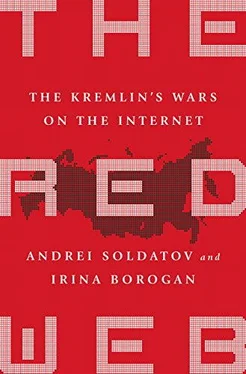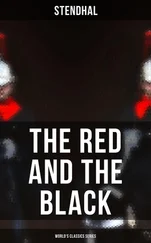On November 21, 2013, Mustafa Nayyem, a thirty-two-year-old liberal television journalist, had been deeply disappointed by Ukrainian president Viktor Yanukovych’s decision to postpone the integration of Ukraine into the European Union. Yanukovych hesitated to sign an agreement with the EU because of pressure from Vladimir Putin, who wanted to hold Ukraine close to Russia and opposed any pact with Europe.
Nayyem posted an angry message on Facebook. “Well, let’s get serious,” he wrote. “Who today is ready to come to Maidan before midnight? ‘Likes’ don’t count. Only comments under this post with the words, ‘I am ready.’ As soon as we get more than a thousand, we will organize ourselves.”
This Facebook post started the Ukrainian revolution. Thousands went to Independence Square, popularly known as Maidan, and stayed there. In the months that followed, the Maidan was turned into an improvised fortress, surrounded by barricades, fires, and smoking tires and guarded day and night by protesters. The protesters wanted closer ties with Europe—a sentiment that was shared by part of Ukraine’s population, largely in the western portion of the country, whereas the east felt aligned to Russia, not in the least because most spoke Russian as their first language. The protests in Kiev were a seminal crisis for Putin, who felt a move by Ukraine toward Europe would be intolerable—it would bring the West to Russia’s borders.
On November 30 the Ukrainian riot police, the Berkut, launched an offensive against the protesters on the Maidan, and dozens were severely beaten. The protesters were forcibly dispersed. Some of them took refuge in St. Michael’s Cathedral, an elegant gold-domed monastery not far from the square. The police then besieged the monastery.
Sasha Romantsova worked at a bank in Kiev, but her job didn’t fit her energetic personality. At twenty-seven, she had already successfully created a large student movement at her university and was deeply interested in events at the Maidan. She had joined one of the first marches in favor of Ukraine’s integration with Europe.
When the protests were dispersed into the monastery, Romantsova received a desperate text message from a friend hiding inside, who said the Berkut were battering down the monastery’s doors. Romantsova was frightened for her friend and angry at the use of force against the protesters. She called the Center of Civil Liberties of Kiev and volunteered to do something—anything—to help to defend the protesters. The center, based in a residential apartment in the center of Kiev, was at that moment thinking the same thing; a workshop was under way on human rights. They decided to form a volunteer service to help locate the detained and wounded from the Berkut crackdown and to open a telephone hotline to gather information from those in trouble.
But one of the most important decisions made that day was to open a group on Facebook, called Euromaidan SOS, which immediately gathered over ten thousand followers. When Romantsova called the center to volunteer, she was told, “We opened a phone hotline, and we need a volunteer to sit here from 4:00 a.m. to 8:00 a.m.” Romantsova enthusiastically accepted. She had to be at work at 9:00 a.m. but was more than willing to work the hotline for four hours first. She stayed there for months during the Maidan uprising, shuttling between the office and the hospital where the wounded were treated. When a few radio stations and a major television channel advertised the phone numbers for the hotline—actually three cell phones—the project expanded rapidly. It began with the intention of locating casualties, but it soon became an information service, fielding calls from all over the city. People called in to report eyewitness spottings of the Berkut, which were then posted on the Euromaidan SOS page, asking those who lived nearby to verify them and report back. [1] Sasha Romantsova, interview with authors, September 2014.
The Euromaidan SOS experiment on Facebook took advantage of the horizontal structure of a network, allowing people to share information readily and disseminating it where it was needed without the need for an established organization behind it. What happened in Kiev was reminiscent of Relcom’s request in August 1991 for users to look out their windows and report back troop movements, but this time it was not e-mails but Facebook that provided the platform. The authorities knew where the Euromaidan SOS was based, but the speed of the network took them by surprise. The Euromaidan SOS group on Facebook thrived and grew with the protests. Soon Euromaidan SOS had created comprehensive lists of the wounded or those missing or detained by the Berkut, and the lists were frequently checked and updated. Along with Romantsova, 250 volunteers worked on Euromaidan SOS, searching for the missing and keeping a direct telephone line open to the Maidan protest organizers on the square. Regular announcements were made by megaphone at the square regarding those who were missing or detained.
Yet the digital pathways that enabled protest could also be used against the protesters. The night of January 21, 2014, was frosty and only about 10 degrees at the Maidan. Most of the protesters were sleeping in tents. Suddenly, all their cell phones vibrated with a new text message. The number was disguised as a service message, and it read, “Dear subscriber, you are registered as a participant in a mass disturbance.”
The identical message went to users of each of the three mobile operators in the city—Kyivstar, MTS, and Life. But it went only to people who were on Independence Square. The phrasing of the message echoed language in a new Ukraine law that made it illegal to take part in a protest deemed violent. The law had taken effect that very morning.
The sense of the message was clear: the protesters had been identified. The text message was a means of intimidation.
Romantsova also received the text. She wasn’t taken aback by it, but she and the protesters saw it as a new trick by the authorities against the protesters. Many of the Maidan protesters quickly took a screen shot of the message and posted it online—the network answered back, defiantly.
In fact, the texts appeared to have an effect opposite the one intended—they outraged many Ukrainians and were widely reported. [2] Andrew E. Kramer, “Ukraine’s Opposition Says Government Stirs Violence,” New York Times , January 21, 2014, www.nytimes.com/2014/01/22/world/europe/ukraine-protests.html?_r=0 , and Heather Murphy, “Ominous Text Message Sent to Protesters in Kiev Sends Chills Around the Internet,” New York Times , January 22, 2014, http://thelede.blogs.nytimes.com//2014/01/22/ominous-text-message-sent-to-protesters-in-kiev-sends-chills-around-the-internet .
All three Ukrainian mobile operators immediately denied they had sent the text messages. So the question emerged: If the message was not sent by the mobile operators, how it was done?
Kyivstar suggested that it was the work of a “pirate” cell phone tower set up in the area. This could have referred to something called an IMSI-catcher, a device that can emit a signal over an area of nearly four square miles, forcing hundreds of cell phones per minute to release their unique IMSI and IMEI identification codes, which can then be used to track a person’s movements in real time. Every phone has such identification codes, although most people are not aware of it. This technology also can be used to intercept text messages and phone calls by duping cell phones within range into operating with a false cellular tower. A transceiver around the size of a suitcase can be placed in a vehicle or at another static location and then operated remotely by security agents.
Читать дальше












